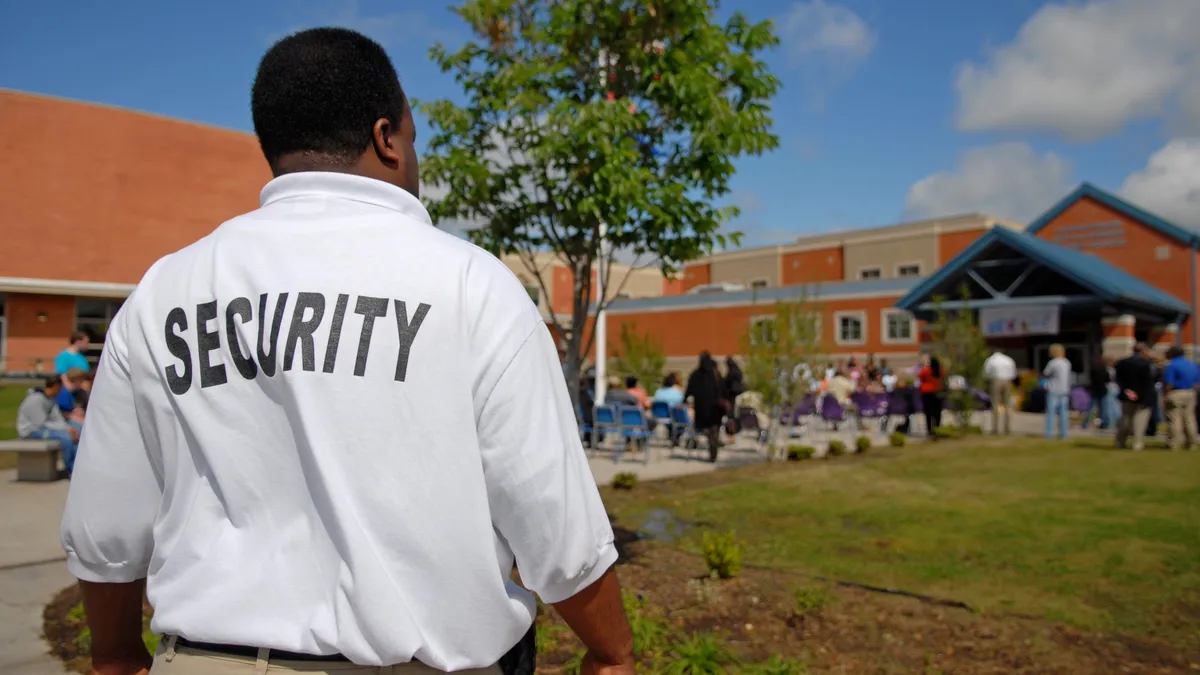Dive Brief:
- In light of several recent school shootings and safety threats, a new federal report from the Institute of Education Sciences reveals schools have kept increasing security measures, and at the same time, incidents of victimization including bullying, fights and other forms of assault have continued to be less frequent.
- Between 1999-2000, 29% of public schools reported student bullying occurring at least once a week, but in 2015-16, this number dropped to 12%, data shows. In addition, the percentage of public schools taking at least one serious disciplinary action decreased from 2003-04 to 2015-16 across almost all offense types.
- However, in 2017, about 6% of students ages 12-18 reported avoiding at least one place in school during the previous year because they feared someone would harm them — an uptick from 5% in 2015. More students in urban areas reported this than their peers in rural areas — 6% versus 4%, respectively — as well as more public school students than those attending private schools.
Dive Insight:
The 1999 shooting at Columbine High School in Colorado marks the first of several major school shootings that transformed the conversation around safety and security. Since Columbine, fears seem to have intensified, especially in light of subsequent tragedies, including those at Sandy Hook Elementary in Connecticut and Marjory Stoneman Douglas High School in Florida.
There are mixed messages when it comes to the frequency of these types of events. While many have referred to the past few decades as an "era of school shootings," a group of researchers from Northeastern University published a study that argues the opposite — that "this is not an epidemic" and that school shootings aren't more common than they used to be. In either case, the public's perception is that their children's schools are less safe than they used to be.
As Education Week notes, this new data comes after a separate poll revealed that Americans think school safety has "deteriorated" since the Columbine shooting in 1999. However, this poll found that most respondents blame student bullying and the availability of guns for these shootings, rather than the schools themselves. But while guns aren't entirely under a school's control, administrators and policymakers are still charged with addressing issues like bullying and these growing safety concerns, as well as any other potential threats to students' safety.
In recent years — especially as technology continues to develop — more schools have implemented security measures and revamped school design as a means of making their buildings safer. However, as more talks of increasing the school-to-prison pipeline by having armed officers on site and hardening schools continue to surface, many administrators and educators are also noting that part of the broader school safety conversation includes addressing mental health, bullying, school climate, and school discipline policies and best practices.
Based on the continued decline of victimization incidents — which include bullying and other forms of violence — as well as less incidents of serious disciplinary action, it seems like what administrators and other school officials are doing to address issues around school safety is having a positive effect. But, it's likely that the widespread demand for more mental health resources, bullying prevention methods and attention to social-emotional learning will also continue.












